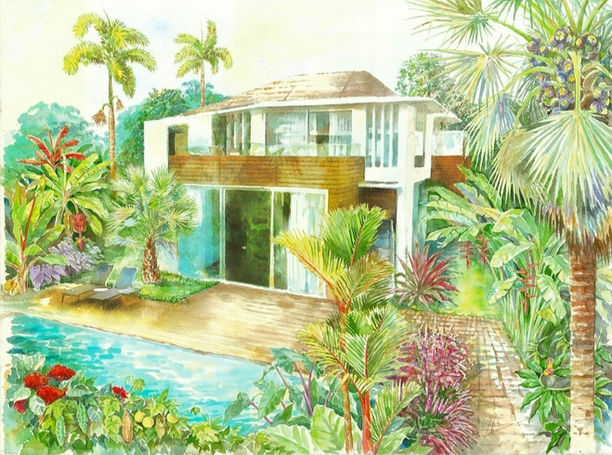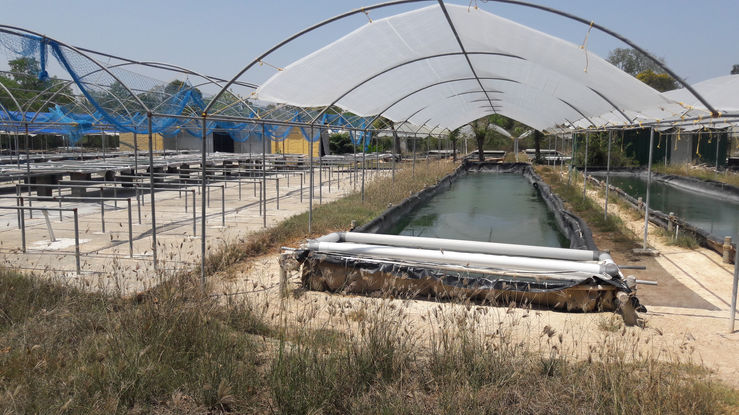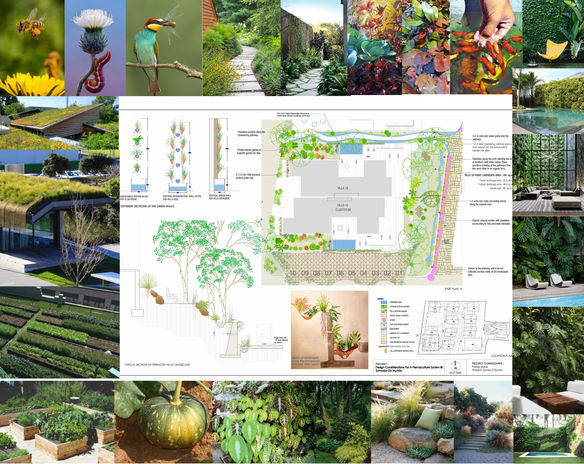
DESING
DESING


Regenerative Systems Design
The Botanical Lab
Material Science & Products
Evolutionary Science & Illustration
Science

Travelling Plants
An art residency and exhibit by Goethe Institute Chennai in collaboration with Alliance Francais madras 2024 , travelling through to Kolkata, Pune, Hyderabad, Bangalore and Delhi.

The physical and theoretical starting point for the project Travelling Plants is the Herbarium at the French Institute at Pondicherry, but where does the story of travelling plants actually begin?
Do we look millions of years ago when masses of land shifted across the oceans to meet new ones? Or the seeds that migrated with the first humans and animals who traversed the earth? Do we pin it on early European conquests and trade routes of the 15th century, that are said to have begun the modern capitalist world system, or the creolisation of cultures and the reconfiguration of biodiversity that occurred in the aftermath of colonialism. Additionally, climatic changes across millennia, connected with cosmic, geological and other upheavals, have seen the extinction, transformation and survival of varied species. Simply put, the answer exists within all these, and provides the reason one must look anew, every day, at the science of plants - to understand, respond to, and evaluate the complex and intertwined history of plant and human life.
Projects like this one bring the necessary focus and specificity to the identification of various streams of knowledge pertaining to nature, turning the lens on individual and collective responsibilities that lie in its preservation. Impelled by the vulnerability of the planet in our current times, contemporary discourse must continually develop vocabulary to cope with change – ‘sustainable’ living is no more a possibility without understanding carbon-footprints and intergenerational equity

For instance, ‘Anthropocene’, that divides the blame equally on all human activity, is being replaced by the more direct ‘Capitalocene’ that holds petro-capitalism squarely accountable for global heating.
Institutions such as IFP are both repositories of information and spaces that offer an experimental ground for mapping responses to climate challenges. The five artists had transdisciplinary interactions that offered the gravity of analytical systems and factual data to their creative explorations. They also interacted with beauty and aesthetics of a different kind, embedded in the microcosmic and macrocosmic elements of the botanical world. Amidst a disorienting contemporary, art and science can lend vigour and meaning to each other.
While these artistic projects are not a replacement for activism, artists help us understand the necessity for new languages and value systems, ones that respond to past and present, that create different visions of our collective future - Lina Vincent

Using the device of a timeline, Waylon D’ Souza creates a web of information and overlapping histories. He contrasts and combines indigenous and western knowledge systems, broadly annotating historical relations of power, ethics, economies and nature through a standpoint of creative activism.

The olfactory memory revival shrines contain fossils of petrified wood, coral and asphalt from roads along with a blend of fragrances specific or nostalgic to the timeline.

Below the Sari would be The travelling seed bank kolam co-created with different members of the project with native and introduced species predominantly collected in the southern subcontinent which have traces of heritage colonialism , capitalism and consumerism.

In conjunction with his graduate studies, Waylon travelled to the Western Ghats, Kerala, and several urban markets, collecting plant specimens for his aquaponic experiments. He infused this into his urban afforestation project which has now evolved into ‘The Botanical Lab’ - an ethos for aesthetic and scientific natural systems.This has grown to be a space where you can touch, smell and taste the art; where plants are allowed to manoeuvre freely and multiply. It reflects a healthy permanence of preservation culture where you don’t segregate, but integrate everything into a communion of possibilities.
This communion is not preached in isolation within a single space but at various projects and ecosystems, so much so that these spaces becomes a kind of affective realm for not just for the designer to develop work that contributes towards projects of ecological calibration but also raising a critical call to our own callous ways of interacting and using nature.
The Botanical lab
Observations from wildscapes inspire Waylon's experimentation and prototyping process. Every experience in the wildnerness serves as inspiration and offers insight into the science of natural aesthetic. Waylon employs these observations to create self-sustaining systems where nature acts as a sublime influencer.
Forest Science
Biodiversity mapping in different ecosystems and study of human interventions in ecosystems
Ecosystem engineering&scientific design with Biomimicry, traditional and modern technology

Water Science
Water plays a central and critical role in all aspects of life – in the national environment, in our economies, in food security, in production, in politics. Water has indeed a special significance for the great religions.
His projects have explored principles of biomimicry for bioremediation in product design, using landscape design principles with aquaponics, leveraging the potential of simple organisms such as fungi,algae and arthropods to create waste and water management plans and products.
Waylon collects simple organisms like fungi and algae to design regenerative ecosystems and leverages their potential to manage waste efficiently. His projects employ the principles of biomimicry for bioremediation.
Aquatic Ecosystems and Hydrology
Waylon replicates natural systems for bio remediation and design by observing journeys of water. He maps hydrology and ecosystems by collecting specimens and documenting stagnant and flowing water bodies (such as tributaries, canals and reservoirs).
Research and documentation
Waylon studies practices in aquaculture, marine and freshwater research. His experiments cross-pollinate ideas from different sectors and aim to bridge the gap between academia and the private sector.
living materials and components in product and systems design
In the '90s, Waylon studied water filters, deriving heavy inspiration from clams, shrimps, fish and corals in order to minimize algae growth and dirt. His designs not only incorporate bio-mimicry, they also draw from the principles of aquaponics by deploying living organisms to accelerate ecosystem growth. Waylon's designs also employ bioremediation - these natural systems require little to no intervention.
I developed this methodology and others, in the process of breeding fish in small aquariums. The quest for a perfect habitat for the aquatic creatures led me to develop my knowledge on their ecosystems.
Bioremedial products and components
During his study at the National Institute of Design, Waylon explored biomimicry inspired conceptions to advance water conservation and usage. He employed activated carbon, zeolite, and ayurveda with fiber filtration to conceive a portable and effective water purifier that integrated comfortably with water bottles and other household containers.
At LG Electronics, Waylon extended this research to improve the performance of washing machines for the urban South Asian market. His interventions were based on extensive user and market analysis.
Farm Setups and Aquaponics
At the Ceres farm in Melbourne 2007, Waylon was introduced to crop and mushroom farming. He co-created rainwater harvesting, polytunnels, and composting and aquaponics systems for the grow beds.

Mud, Mushrooms & Mycelium
I believe that mycelium is the neurological network of nature. Interlacing mosaics of mycelium infuse habitats with information-sharing membranes. these membranes are aware, react to change, and collectively have long-term health of the host environment in mind. the mycelium stays in constant molecular communication with its environment, devising diverse enzymatic and chemical responses to complex challenges.
These networks not only survive, but sometimes expand to thousands of acres in size, achieving the greatest mass of any indivisual organism on this planet. that mycelia can spread enormous cellular mats across thousands of arces is a testimonial to a sucessful and versatile evolutionary stratergy - Paul Stamets
Using mulching, termites and fungi to create good soil , and growing edible mushrooms
When we think of eating and growing food, we tend to overlook soil health. Soil is more than mud and dirt - the state of our soils have wide-ranging impacts, touching everything from human health to climate change.
Healthy soils help grow our food, clean our water, store carbon, and reduce risks of droughts and floods.
Agricultural production systems that use biological practices for soil regeneration have immense potential to sequester carbon. Nitrous oxide emissions can also be mitigated by reducing the use of nitrogen fertilizer.
Soil enhancement and conditioning
Waylon enriches soil health through thoughtful composting systems. In the past, he has synchronized composting and aquaponics feeding systems.

Important Allies
of Permaculture
Waylon creates natural systems that are sensitive to the needs of wildlife. He believes that gardens can play a pivotal role in wildlife survival by including plants that provide nectar, berries and seeds. He studies food webs and the relationship between entomology and ecosystem health. His gardens create natural shelters for birds in shrubs and hedges. His landscapes generally include a small pond in the garden to offer respite. Waylon's landscapes avoid chemical intervention and consciously allocate spaces to vegetation over hard surfaces.
"People have learned to create places in their gardens that are a haven for wildlife, with plants that are more insect friendly, achieving a better balance for ecosystems and sustainability."
Waylon designs architectural interventions using species that regulate pest populations.
10,000 square meters of vegetable and perfume walls form alleyways in residential properties. Endemic butterfly gardens and flora are designed to support apiaries

Health & Nutrition
The farm-to-table philosophy embraces a sustainable approach to agriculture and dining. At its heart, the concept is simple: there is value in eating locally.
Waylon analyzes the sustainability of food systems by studying economics, operations and nutrition. He collaborates with diverse stakeholders in the food industry to incorporate vernacular traditions in new age practicers. His collaborators include food scientists, manufacturers, Ayurveda practitioners and artisanal food brands.
While freshly harvested seasonal vegetables and fruits retain higher levels of nutrients, this can be lost during lengthy storage or transport times. Oftentimes, unripe produce is picked in order to accommodate the desired shelf life and survive shipping across long distances. However, pre-mature harvesting disallows the development of nutrients to the optimal level.
Waylon is working towards designing centralized and de-centralized community systems that uses different methods of food production and consumption and benefit the stakeholders of local ecosystems. These systems are intended to produce foods of maximum nutritive content, have therapeutic value and medicinal applications, in addition to meeting culinary needs.
Waylon's food interventions are aimed at landscaping gut flora by drawing from the principles of ayurveda and learning more about food chemistry
Centralized, large-scale food systems consume great amounts of fossil fuels for growing, producing and transporting food. The food industry is also polluting, through factories and other sources. In contrast, decentralized food systems offer diversity and are less resource-intensive. An impressive range of edible plants can be grown very successfully in pots, bags and other forms. This could be the beginning of a healthy food revolution while championing a sustainable lifestyle and environmentalism in both rural and urban areas.
The farm-to-table movement ensures consumption of food in proximity to the area where it was grown or produced. Restaurants and individuals who buy local not only have a lower ecological footprint, they also positively impact the local economy. By cutting out wholesalers, farm-to-table systems puts money directly into the farmer's hand.
He is also trying to understand the correlation with biomechanics and organ systems through yoga, dance and other practices

Architectural Science
Waylon documents and researches built heritage, from vernacular to contemporary structures
Collaborations with architects and developers enable more documenting, researching and experimenting with materials and practices

Material science
Waylon studies the connections between the underlying structure
of a material, its properties, its processing methods and its performance in regenerative design. He employs a biomimetic approach to model industrial systems on natural patterns. He treats all available materials as potential nutrients that circulate in a healthy metabolism. Regenerative design goes beyond
the cradle-to-grave approach
keeping materials in
constant circulation.
Urban Detritus
"Like all of us who live in Goa, I used to cringe every day to see the devastation caused by littering and garbage in my home. In just a few years, the situation has gone from bad to disastrous. All the while, I’ve observed several failed attempts to address the issue: laws, tagging, banning, and blacklisting. It hurts to think of the resources involved and the pollution caused by these flawed industrial processes that serve as interim solutions.
Instead, I think we should look at nature’s own cycles and think of waste as raw material. We need to explore inherent possibilities in extending the principles of permaculture to design balanced urban ecosystems.
I have designed and made these pods from garbage and waste packaging, to mimic paper wasps and their cocoons. Another inspiration was undulating mercury, like the glistening becalmed sea on a bright afternoon on the North Goa coastline.
What was once disposable is meant to last for many years, as we shed light on the seeds of a self-sustaining blue economy."
Material : Household waste packaging, cigarette and chips packets collected off the roadsides of Goa

Evolutionary Science & Interconnectedness
Waylon explores biological and anthropological evolution through installations that are grounded in science and philosophy.

Vision is one the most direct, immediate and swift mediums for transferring and receiving information, structures framing the observer and the observed in an all encompassing vast ever evolving surveillance system.
It could be precognitions through a stare, predation, symbiosis, extinction or proliferation, acknowledgement of presence or evasion from detection.
If the essence of life is information that is carried in DNA , then its frantic perseverance to create, is carried and expressed in forms of diversity.
The transfer of life energy and information through constant scrambling and encoding through different species create different realities for each species or specific individual.
Their interaction is the medium to create such vast external information storage systems. we are metaphorically like self-sustaining hard drives.
The installation : The viewer has a choice to be looking at it from a all knowing perspective yet is wrenched back in to the reality that he is part of it .The sharp rigidness yet transparent fluidity of the installation is to convey a matrix of ruthless yet affectionate nature of life.

Science and Conservation
Trophic cascades are powerful indirect interactions that can control entire ecosystems, occurring when a trophic level in a food web is suppressed. A top-down cascade is a trophic cascade where the top consumer/predator controls the primary consumer population. In turn, the primary producer population thrives.
longevity and transience
Sherab Lobzang and talks about her experience of encountering a snow leopard when she was a child and how it killed one of the goats in her family's herd.
The protected area network in the Trans-Himalayan landscape is considerable; however, species such as the argali and snow leopard are not confined by these boundaries and naturally need to range over much larger distances.
In this unique landscape, a traditional protected area (PA) is not an adequate conservation measure, given that wildlife moves extensively, people use these lands ubiquitously, and because the landscape is uninterrupted with low productivity.
PAs in the Trans-Himalaya are used extensively by humans.
Pastoralists who depend largely on livestock produce, marginal agriculture and local resources have lived within these PAs for generations.
On researching about about the various aspects of ladakh,its ecosystems,lifestyle and produce, man-animal conflict and solutions, change due to tourism and development, beliefs and religion, People and pastoralism, Nomadic pastoralists, These herders rotate between grazing areas in different seasons, moving between pastures that are just a few tens of kilometers to a few hundred kilometers apart depending on herd size.The rights to pastures are held by sedentary pastoralists who are usually village residents.
The losses that take place inside corrals can be curtailed through predator proofing. Most traditional livestock pens are only effective in corralling the stock inside but not very effective in keeping predators out. They often lack doors and roofs or the windows are just holes in the wall. Predator proofing of these corrals includes adding a chain-linked roof, solid wooden doors and iron bars on the windows.
Income generation from snow leopard tourism is another way of mitigating the costs of living with carnivores. In Hemis National Park, Ladakh, snow leopard tourism through home-stays supplements the income of pastoralists (Jackson and Wangchuk 2001, 2004).
Although these communities are in flux, with changing values and priorities, it is at the same time still shaped by Buddhism that emphasises on compassion for wild animals. The Buddhist monastery in Spiti had once famously asked the local people to not over harvest seabuckthorn (Hippophae spp.) berries so that the birds would have enough to eat!
For example, in the past villagers commonly shared pack animals in informal exchange relations. Now, during the tourist season, animals are no longer available to a neighbor in need: they are frequently off in the hills carrying tourists' luggage. Nor can a villager afford to hire the extra animals he might need to carry his loads from the high pasture. Similarly, villagers have begun selling traditional building materials in Leh, where a building boom induced by tourism supports far higher prices than what fellow villagers might offer. Where once economic surplus stayed within the villages, it is now absorbed into the larger market. As a result inequality within the villages is growing
Many tourist facilities that attempt to maintain Western standards end up making demands on scarce water resources that are far beyond what the community usually requires. Communal water sources have been tapped for the exclusive benefit of particular hotels, and during dry periods hotels have brought in water by tank truck.
Until recently Ladakh had no waste problems; everything could be cycled back to the land. The large volume of wastes produced in the modern sector is polluting land and water and has increased the incidence of disease sharply.























































































































































